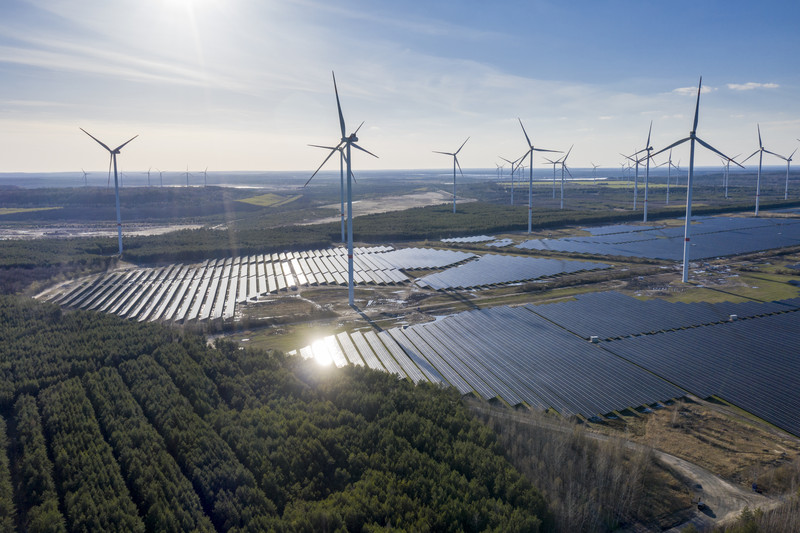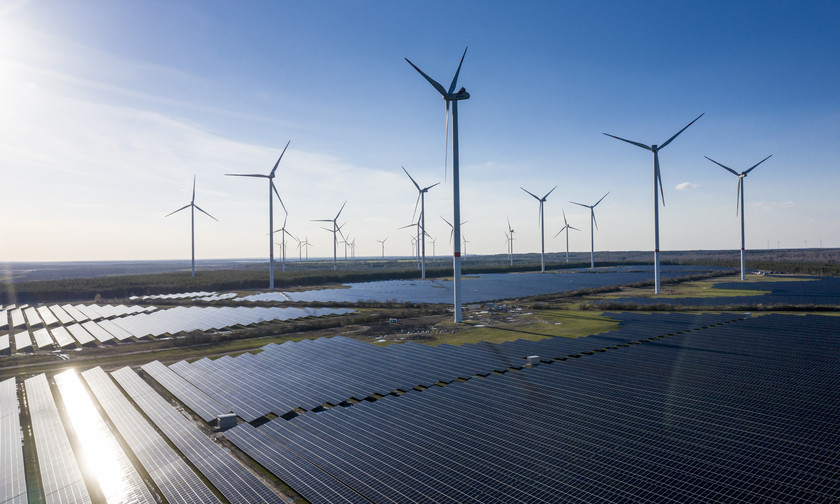On the former high dump of the Klettwitz opencast lignite mine (municipality of Schipkau) stands the "Lusatia Energy Park": a pioneering project by Terravent Investments, Steinbock EE and GP JOULE. It combines the generation of climate-neutral solar power with the production of green hydrogen, CO2-free and with numerous benefits for the region.
GP JOULE is the general contractor responsible for the construction of the Lausitz Energy Park. The overall technical planning includes the plant design, component selection and the selection, commissioning, and coordination of subcontractors. In addition, there is the project realisation including documentation, grid connection, commissioning, and warranty. GP JOULE's services also include communication with the grid operator, cooperation with the local authorities in connection with nature conservation and ecological construction monitoring, documentation and compliance with occupational health and safety regulations.
Klaus Prietzel
Schipkau's mayor
"For me, the 'Lusatia Energy Park' project represents an almost unique opportunity within the world of structural change," emphasises Schipkau's mayor Klaus Prietzel.

Solar plants with an output of up to 300 megawatts are being erected on three sub-areas in the Lusatia Energy Park. The electricity generated flows into the public grid, is supplied to direct electricity consumers and is partly converted into green hydrogen. This climate-neutral raw material is made available to local industry as well as the mobility sector.
In the area of the former high dump, the photovoltaic plants will be erected in several partial areas between the wind turbines. In the first "Klettwitz North” construction phase, around 90 MW of power was installed. Construction work began in August 2021, and electricity has been flowing since May 2022.
In the second "Klettwitz South” section, 80 MW of installed power have been in operation.
The planning area of the third construction phase offers an area potential for up to 120 MW of installed photovoltaic power and runs across several municipalities:
- Community of Schipkau
- Community Lichterfeld-Schacksdorf
- Community of Sallgast
The "Lusatia Energy Park" is ideally located. The site of the former open-cast lignite mine is unsuitable for agricultural use and was simply asking for a new type of use. What is more, potential major customers from the surrounding area have already expressed their interest in purchasing electricity and hydrogen. This is why the further development of renewable electricity is also being considered here, to benefit both the community and the region:
- climate-neutral industrial location thanks to low-cost green power and gas generation
- Positioning as a future-oriented and sustainable region
- Pioneering role in renewable hydrogen production and use
- Providing support for new businesses to establish themselves
- Safeguarding local jobs
- New sources of income (trade tax, user fees)
- Regional added value and acceptance through e.g. emission-free public transport based on hydrogen
Renewable energies: regional, affordable, tangible
With the "Lusatia Energy Park" project, the state of Brandenburg and the Lusatia region are positioning themselves as pioneers of the second step of the energy turnaround. This is because the energy park decarbonises those sectors that have so far been insufficiently considered in the context of the energy turnaround: industry and transport. The energy park is also the starting point for green hydrogen in the Lusatia economic region. It supports diversifying the economic structure and creating new jobs.
Climate-friendly, green hydrogen is produced when renewable energies divide water into its components oxygen and hydrogen. The energy of the electric current is converted into chemical energy and stored in the hydrogen. The process is called "electrolysis" and takes place in an electrolyser.
A fuel cell vehicle runs on hydrogen as the on-board fuel cell converts the fuel back into water together with oxygen from the ambient air. The energy released in the process drives the electric motor. The water vapour escapes from the exhaust - and nothing else.
Electrolysis processes have the advantage that they can react to volatile solar and wind conditions within seconds. No worrisome chemicals are needed, the resulting hydrogen has a very high degree of purity and is therefore optimally suited for compression and further processing.
Electrolysis technology upgrades green electricity into hydrogen and thus builds a bridge to the industry, mobility and heat sectors. Using green hydrogen reduces industrial and mobility emissions, especially in heavy goods transport and, in the future, also on water, on the railtrack and in the air. Heat is a by-product of electrolysis and is used in local heat networks in a climate-friendly way.
